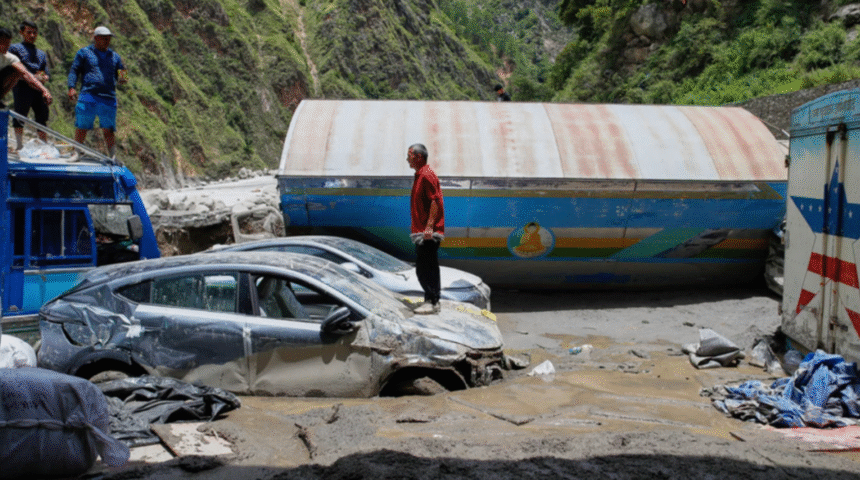Beijing, July 9, 2025 — Southwestern China is grappling with severe flooding after torrential rainfall pushed water levels in at least 25 rivers beyond critical safety thresholds, prompting the evacuation of over 10,000 residents.
The deluge, driven by remnants of Typhoon Danas and intensified by the ongoing monsoon season, has caused widespread disruption and raised serious concerns about the country’s aging water management infrastructure.
Meteorologists link the flooding to the broader impacts of climate change, noting that rising global temperatures are intensifying weather events across the region. The crisis poses a direct threat to millions of residents and jeopardizes China’s $2.8 trillion agricultural sector.
In Beijing, rainfall reached alarming rates, with the Chaoyang district recording 68.2 millimeters of precipitation in just one hour Monday morning, according to the Beijing Daily.
In Chongqing, one of China’s most densely populated southwestern cities, ten rivers — including the Longyan River — are at risk of overflowing. The Ministry of Water Resources warned that embankments are under extreme pressure and may collapse, while 15 other rivers have shown significant surges in water levels.
Guizhou Province recorded the highest water level on the Qishui River since measurements began in 1953. Meanwhile, in Sichuan, the Xiaoqiao River reached its highest level in 29 years. Across Yunnan and Sichuan provinces, over 10,000 people have been evacuated, with one county in Yunnan experiencing 227.8 millimeters of rainfall within 24 hours — the highest recorded since 1958.
Tragically, two deaths have been confirmed in Zhaotong, Yunnan, according to the state-run Xinhua News Agency.
Health authorities in Beijing are also warning of increased risk of waterborne illnesses and food contamination due to the dangerous mix of heavy rainfall, high humidity, and rising temperatures. The situation remains critical and under close monitoring by national emergency agencies.







